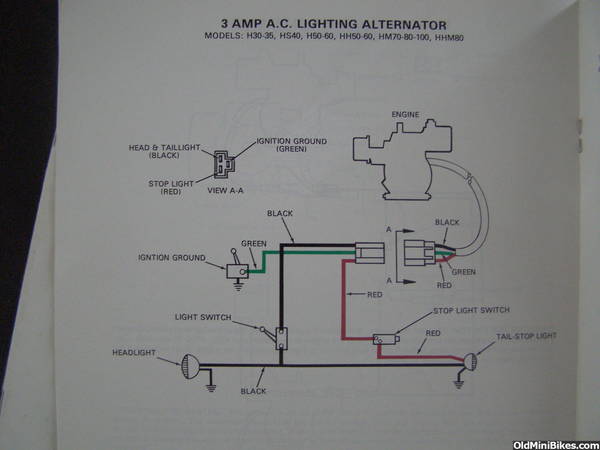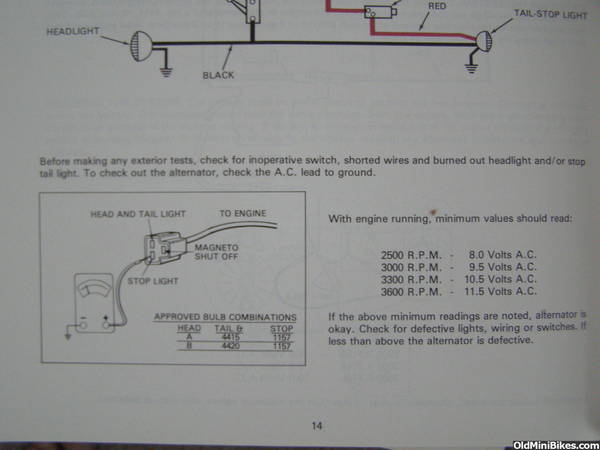I do appreciate the help. So, the final answer is one new kill switch wire to the green wire coming off the engine, the second kill switch wire gets connected directly to the frame somewhere? Attaching the two kill switch wires directly to the green and black wires coming off the engine will fry the coil. I bet this does come up a lot.
YES!
FYI- those push button switches that clamp to your handlebars with one wire make a lot cleaner installation. In that application, the switch body itself is the ground.
The black wire is AC
The red wire is AC
Both of these are separate and out of phase. One powers lights for example, the other powers the brake light, or whatever combo makes one happy.
(If they were phased together from a frequency standpoint, ie providing the same voltage at the same time, positive, or negative, they would explode spectacularly) (referred to as paralleling alternators, and something electrical engineers have to provide safeguards against in multi-generator realms via frequency sensing devices.
Not a problem on these, since the actual coils going to the black and the red wire, or later on, yellow wires, are physically separated, which is plain to see when you look at them. (think rotation as setting up frequency)
As alternators, they go from a maximum of negative 12 volts AC to positive 12 volts AC at whatever frequency the engine RPM is at. This is why systems equipped with a battery need to have diodes. (Rectifiers) They bias the output voltage, preventing it from allowing negative voltage, (voltage below zero) to pass. This provides what some call "DC" to charge the battery. However, it is not really DC, it is pulsating DC, running from low voltage to max. voltage at the frequency set up via RPM.
There is no such thing on this alternator as "alternator DC (+) lead, or "alternator ground/battery ground." There is no DC anywhere. There are no grounds associated with the alternator outside of the fact that it's electrical potential is referenced to the frame. (AC power)
When you ground the green wire, you are in essence shorting the points to ground, which completely removes voltage potential from the field, thus collapsing it, and preventing spark from occurring via the primary coil.
So no, it's not verbal salad to someone who has an understanding of electrical theory, and quite honestly beyond the scope of your question. This exact topic however has been discussed here, and at least a few members from long ago have attempted to build electronic versions of controlling as well as using primary ignition coils to generate.
Oh and....I'm pretty sure the "black" is what used to be the "brown" on older models.






